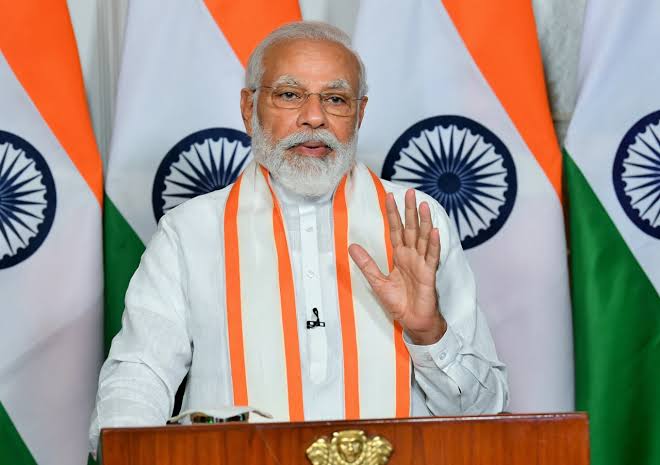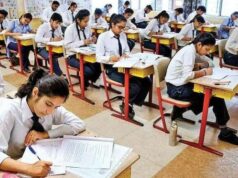Western Analyst Attacking India’s Atmanirbharta

Since 2014, Government of India started a new era of indigenisation under the Atmanirbharta campaign. Initially in denial mode, now the Western Media have started a very subtle campaign with criticisms of the Indian effort. They subtly whisper that the push for indigenisation has even claimed lives and national security.
Some Analysts are trying to compare India’s deep intiative into defence manufacturing, with the state owned Soviet Union defence manufacturing. As per them The Soviet Union and later Russia have mainly emphasised the state-owned defence industry. Their state-owned defence industry has held contracts from tanks to planes to warheads.
The Analysts claim that though Soviets and Russia produced formidable fighters like Sukhoi and MiG at a cheaper cost, they remained behind their Western counterparts in innovation. To bolster their claim, they try and talk of few experimental failures. However facts on ground tell a different story. Also on the battled field, the so called cheap Soviet weapon systems in experienced and motivated hands, fully decimated the so so called sophisticated and super weapon systems of American / European origin.
They also try their best to run down the large state-owned or influenced defence industry of China. China’s investments in technology, innovation and indigenisation have led to a large inventory of equipment ( westerners allege that they are all copied versions) which then fuelled original advanced machinery. With their resources, Chinese have churned out equipment like anything. Also even the USA is now afraid of taking on China headlong in the Indo Pacific.
Citing the above examples of Russia and China, analysts are trying to advice India that ATMNIRBHARTA will be a limited success only with slow production, high failure and dubious defences. So India should not head that path but rely only on COSTLY Western equipment, attached with MILE LONG Strings and thus forever be dependent on them.
India in turn is giving them rude shocks after shocks.
Analysing Atmanirbharta
By turning Make in India into Made in India Atmanirbharta has been ushered in India and has propelled it into the 21st century as stronger and confident emerging Super Power, second to none. The Defence Procurement Procedure (DPP) initially viewed as obstacles more than enablers. The dream has started big: 25 per cent of the GDP is soon going to be through Make in India.
After initial success for domestic private players like Mahindra, L&T and Tata, the government reworked its approached and streamlined it. With Innovation for Defence Excellence (iDEX), an ecosystem began shaping up to foster growth. Primarily, the Indian way is to strive for technology transfers from foreign OEMs and promote manufacturing in India by foreign OEMs. This strategy has been successful because it has led to various foreign OEMs partnering with Indian counterparts and increasing domestic presence.
With a negative import list, the international media claims India is fighting with a hand-tied. As per thepenot only cutting edge equipment out of reach but also the Army and the Navy are preparing to prolong the life of existing equipment. They forget that unlike the Western mind-set, we Indians do not discard things that easily or quickly. They try to buttress their argument by insinuating that India’s Chief of Defence Staff lost his life in a crash because he was flying in an outdated helicopter. …..if the latest Mi17 is outdated then so are the Americans F35s crashing on regular basis.
The Mazagaon Docks may be taking its time in producing complex machinery like diesel-electric submarines but it is moving surely to achieve that aim and soon will commence production of the first indigenous submarine.
AAfter1964 Chinese nuclear explosion, Homi Bhava made a claim of producing a nuclear weapon in months and had to pay with his life together with hundreds of other passengers…..who did it ?
Then came 1965 War where India was attacked with NATO / CENTO and American gifted weapons, we managed well. The 1971 showed what that chap Nixon was made of when he ordered the Enterprise led Flotilla into Bay of Bengal. Mrs Indira Gandhi quietly noted it and Indian Scientists concentrated on missile technology. In spite of their all out effort the MTCR members could not prevent India becoming a leading missile power today. Similarly the Cryogenic engine saga orchestrated by USA has not been able to prevent India’s rise in the Commercial satellite segment. Today India has become a leader in this field.
For the Navy, first we concentrated on the hull and today have achieved near 100% indigenization in FLOAT category. The propulsion technology will take a bit more time where we have reached around 70% indigenisation. The final frontier is the Sensor and fighting systems. Here also we have crossed the 50% mark.
Due to Western mechanization our HF24 did not evolve into a versatile fighter. Today the Tejas Mk1 has 40 of them flying and proving to be better than the latest F16. Analysts harp that these 40 have come up after 40 years. They should see how fast Tejas Mk1A is going to enter service then the Tejas Mk2. Our AMCA will be catching up with any existing 5th generation technology. After that we will be concentrating on numbers and our 6th generation fighters will start with all others of the World. Yes jet engines are our weakness presently but this also will be over come shortly.
So there is no need for any one to harp that twin-engine fighters, etc. The Indian Air Hindustan Aeronautics Limited (HAL) at this important juncture produces only single-engine fighters like the Light Combat Aircraft (LCA) Tejas, and also can produce only 8 in a year.
Apart from fighters, HAL is producing own designed light helicopters and attack helicopters. Soon HAL designed medium helicopter will also be entering service and thereafter will come the Heavy lift.
Similarly SARAS MK2 Light transport will be flying in the Indian skies followed by make in India C295 and later HAL designed medium transporters. Heavy lift will follow thereafter.
Indigenisation is not an isolated switch in policy. It is a concerted effort with required investments of money and research time. Imports have circumvented the wait with the associated cost (more like a penalty for not coming up with an indigenous offering), but with negative import lists and a strict indigenous by per cent rules, the move has the potential to ensure that India soon becomes a major exporter of weapons and equipment.



